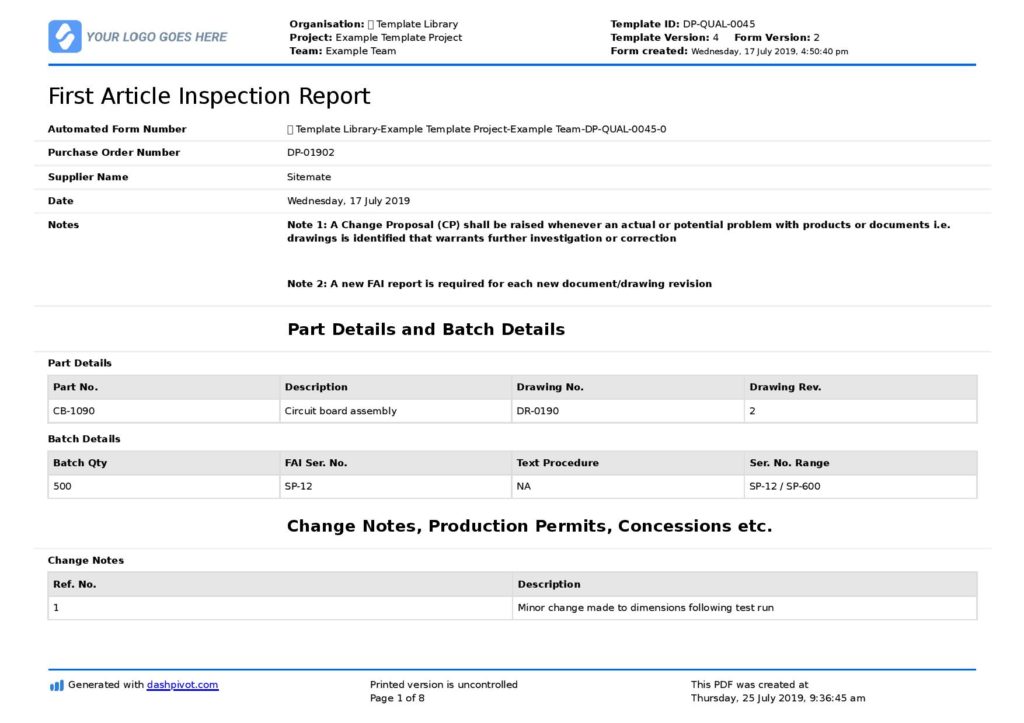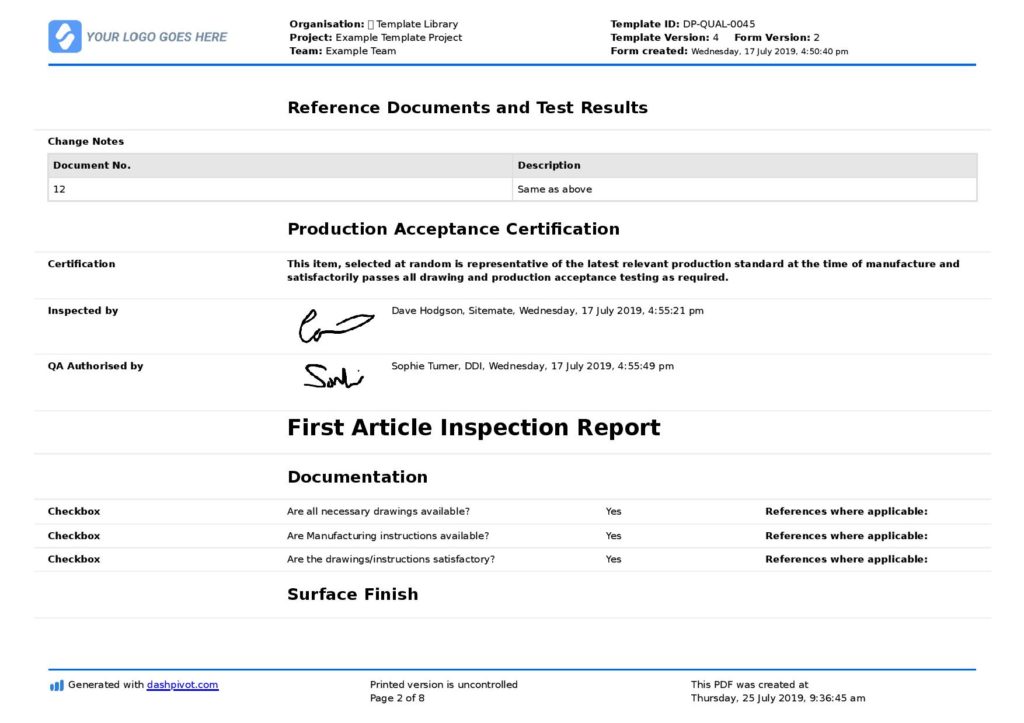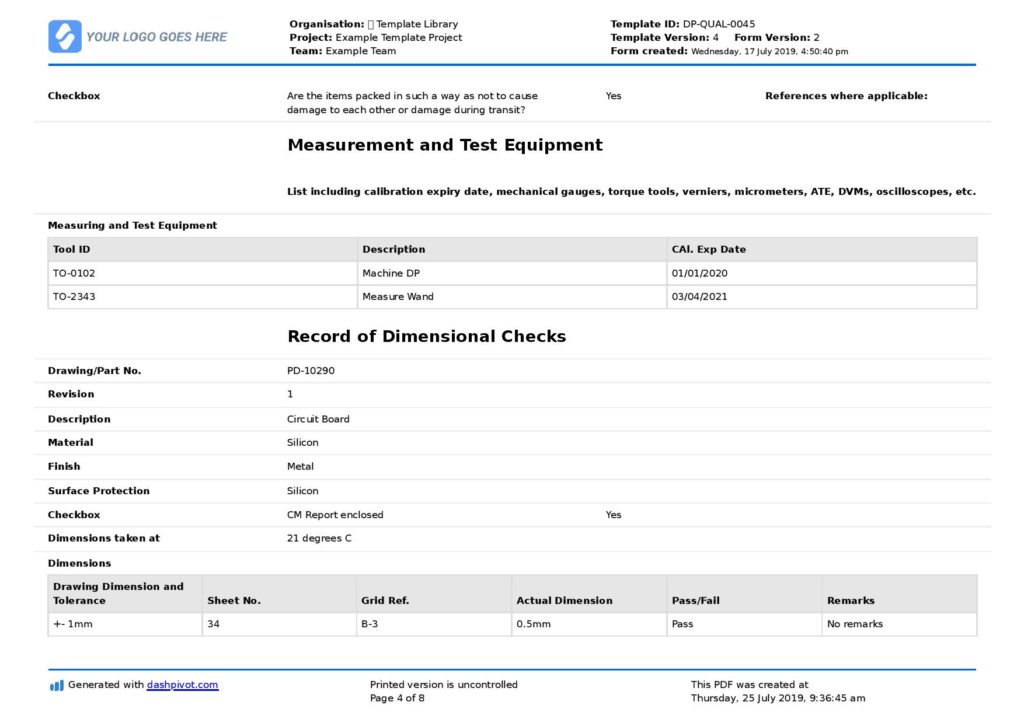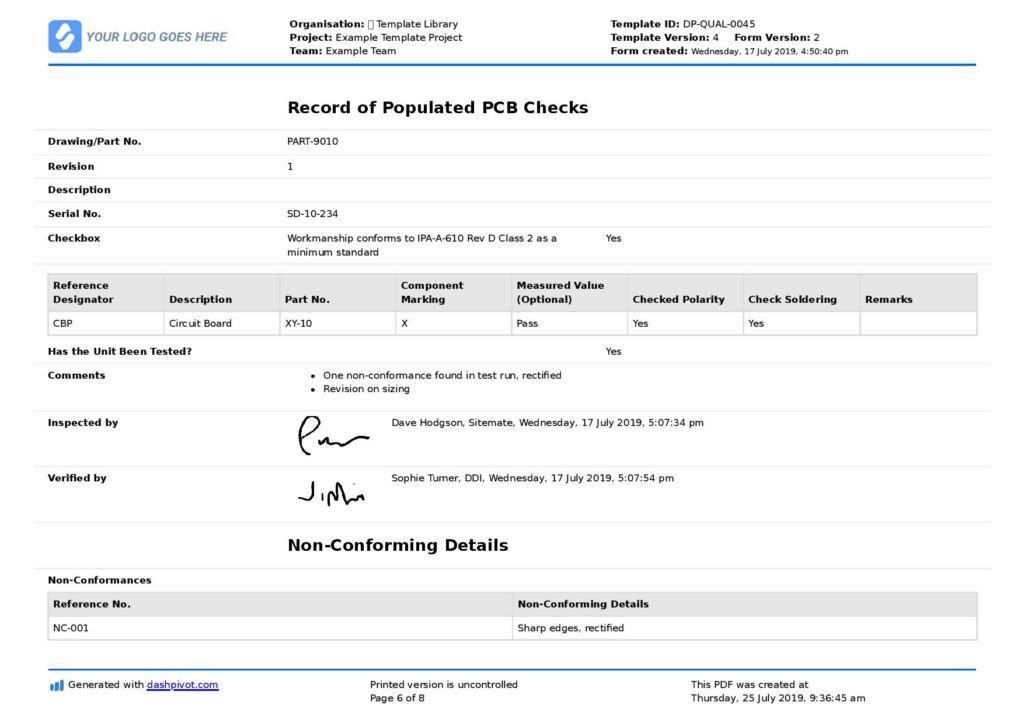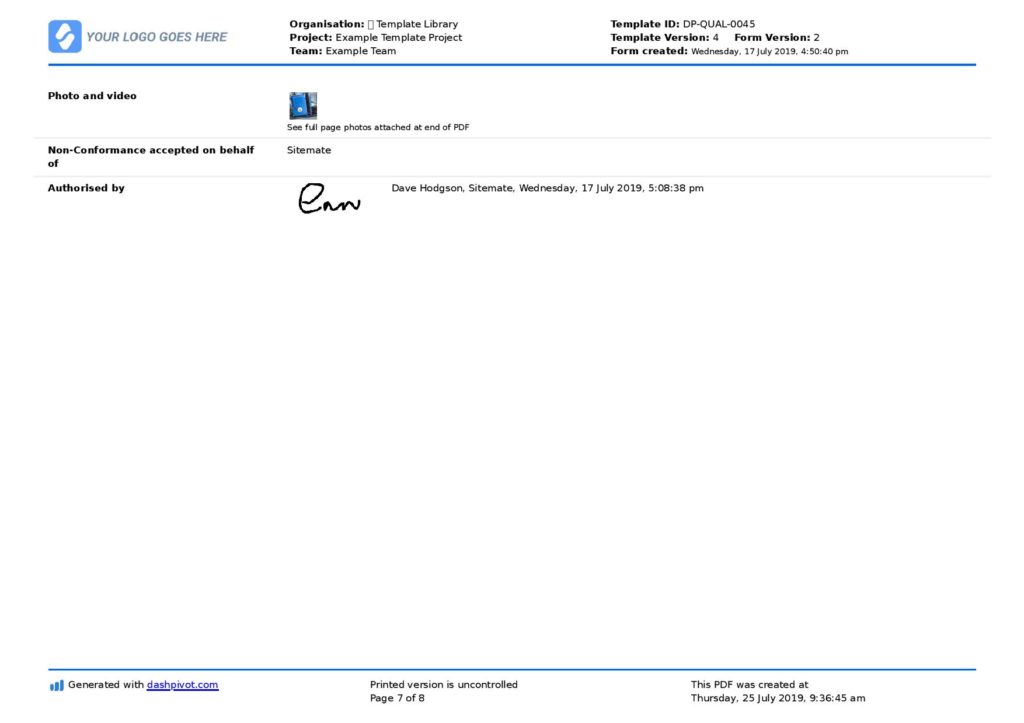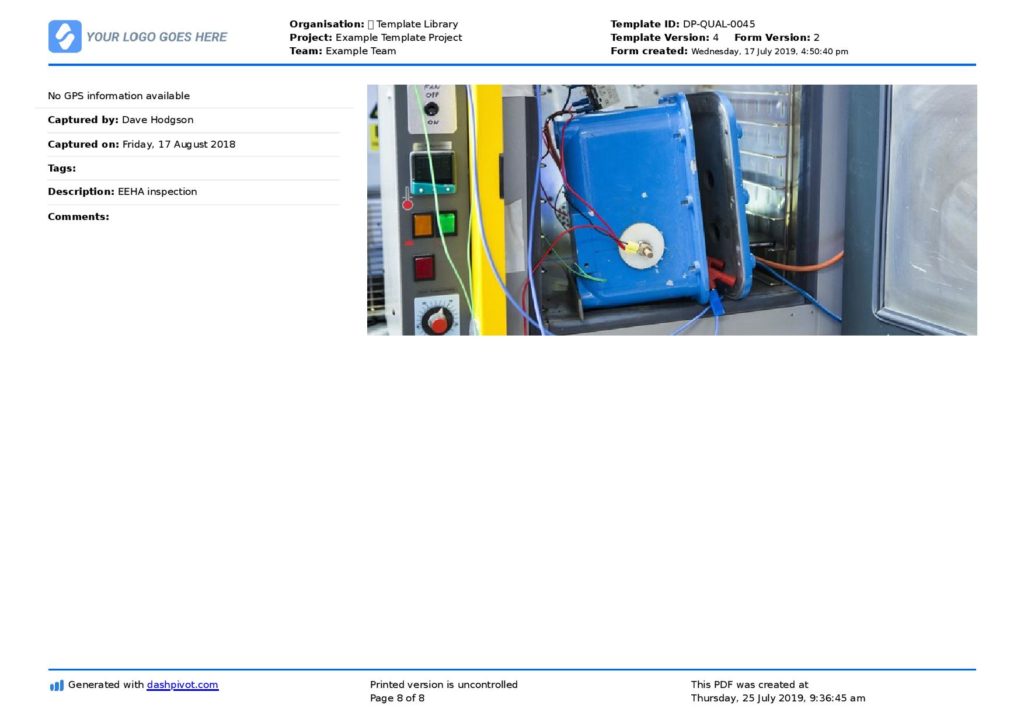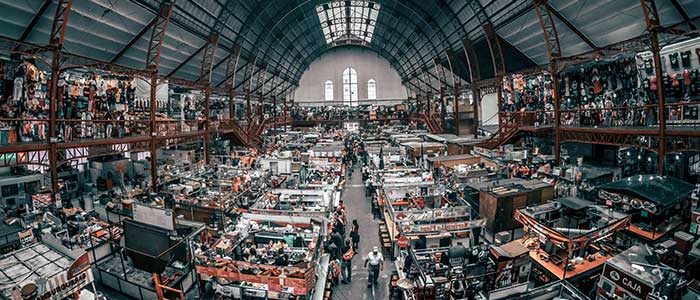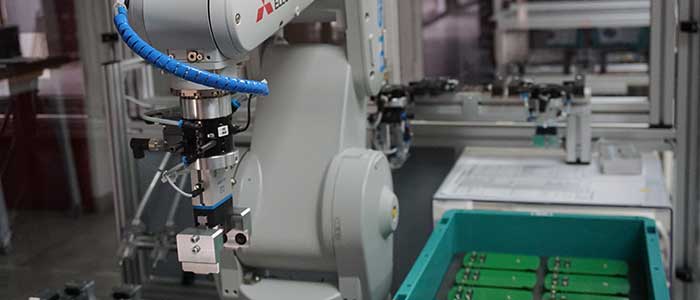Quality – First article inspection

First article inspection: What you need to know about FAI
What is a first article inspection?
A first article inspection (FAI) is one of the most common ways in which product suppliers, manufacturers and buyers assess and evaluate the quality of an initial sample or 'first article' against the given specifications and properties of that specific product.
Even though the name suggests that the process is always associated with the 'first article' or first item of the production line, a first article inspection often includes a random sampling of items (usually three (3) items) from the first run.
A first article inspection does need to be conducted early in a production run to prevent the wasted time and money associated with receiving any non-sellable goods. A first article inspection needs to be conducted during a mass-production run, because a sample run doesn't typically involve the exact setup associated with a full production run.
Most companies perform a pre-production sample run as well as a first article inspection. Both are critical to overall quality management.
The purpose of a first article inspection is to provide the supplier and purchaser with an objective measurement and report on the given manufacturing process specific to the product in question as well as acting as a formal method for design verification.
A first article inspection is typically included in the contract between the supplier and the buyer and is mutually beneficial; the buyer can ensure its products meet its expectations and requirements, and the supplier can continue to run and manufacture the product knowing that the quality has been accepted.
Some of the common 'aspects' of a product which are assessed during a first article inspection include:
- Weight and density
- Stiffness and surface finish
- Colour
- Distance between edges
- Positions of holes, shape of holes
One of the most powerful elements of a first article inspection is its detail. A first article inspection report should verify the process and outcomes of every parameter, not just the obvious ones. On top of this, the buyer also needs to assess and validate whether or not the suppliers tooling is adequate, and whether they can meet the ongoing needs of production.
To do this properly, the first article inspection should take place when:
- The manufacturer is using the tools and equipment which will be used throughout production
- The factory staff working will be working throughout the duration of the order
- The materials and components being used will be used throughout the process
While first article inspections can and are conducted across many industries, they are often most used and valued in industries where specs are critical to performance, such as military and defense, aviation, medical devices and electronics.
There are a number of other similarly worded quality checks in manufacturing including factory acceptance testing checklists, which you can also read about on our website.
Now that we have a pretty good understanding of what a first article inspection is, let's dive into the more practical aspects of the process.
First article inspection process flow
First article inspections form a critical part of quality management, but they don't form the only part.
Most companies have a specific quality process flow for the entire manufacturing process which include pre-FAI phases like sampling, and also outline the steps following a successful (or unsuccessful) first article inspection.
In addition to outlining and documenting what these process flows need to look like to ensure you have all of your basis covered every time, you should also have well documented specific first article inspection process flow.
Within the greater process flow for quality management, each first article inspection has its own comprehensive process.
This process flow typically includes the roles and responsibilities of the buyer and supplier, and what each party is doing at each stage of the first article inspection process. For example, when the supplier accepts the requirements for the FAI, and a bunch of steps between then and when the supplier ships the final material.
Outlining all of these steps in a process flow ensures no easily avoidable mistakes are made, and nothing important gets missed.
First article inspection sample size
One of the critical parts of any inspection process associated with manufacturing is sample size. Like most sample size questions and concerns, the size of your sample size will depend on the level of accuracy and confidence you want in your first article inspection findings.
You can find a lot of good information and detail around sample sizes online.
An interesting note on first article inspection sample sizes is that as quality improves (which is of course the a favourable outcome), the efficacy of your sample size from a defect management standpoint actually decreases.
If the quality of the production run is extremely high (there are no design issues and almost no defects), then the chance of picking a defective sample in a sample of 3 is extremely low.
This is the case for most of the industries who work with first article inspections closely. They are working with extremely high expectations for quality and extremely low tolerance for defects.
Keep this in mind when thining about and considering first article inspection sample size.
First article inspection example
One of the best ways to understand what a first article inspection is and what it should look like is to look at a first article inspection form.
Like almost all 'inspection' or quality processes, a first article inspection needs to be documented and signed off by all parties so that the details of the assessment are written down and agreed to.
If there is some future issue with the product or production run, then both the supplier and buyer have a reference point for that first article inspection.
You can see a full first article inspection outcomes framework below.
As you'll see if you hover and click on the document, a first article inspection typically involves a number of phases or 'sections'.
The preliminary sections of the document (which come before the inspection of the item) typically include:
- Part details and batch details
- Change notes, permits and concessions
- Reference documents and test results
- Production acceptance certification
Then the first article inspection involves inspecting and documenting the:
- Surface finish
- General appearance
- Process control
- Packing requirements
- Measuring and test equipment
- Dimensional checks
- Circuit board checks
- Populated PCB checks
- Non conformance details
The main goal of a first article inspection is to ensure that the quality of the product is as required, and any non conformance found throughout the FAI need to be documented and agreed to as non conformances.
The supplier or buyer (or ideally both) then work on rectifying those non conformances as soon as possible. This may include a simple manufacturing or production tweak, or may include design changes.
Most companies who engage in these runs have well established and reliable first article inspection documentation, and those who don't need to. Keeping your FAI documents organised and standardised is critical to ensuring quality across all of your products or works.
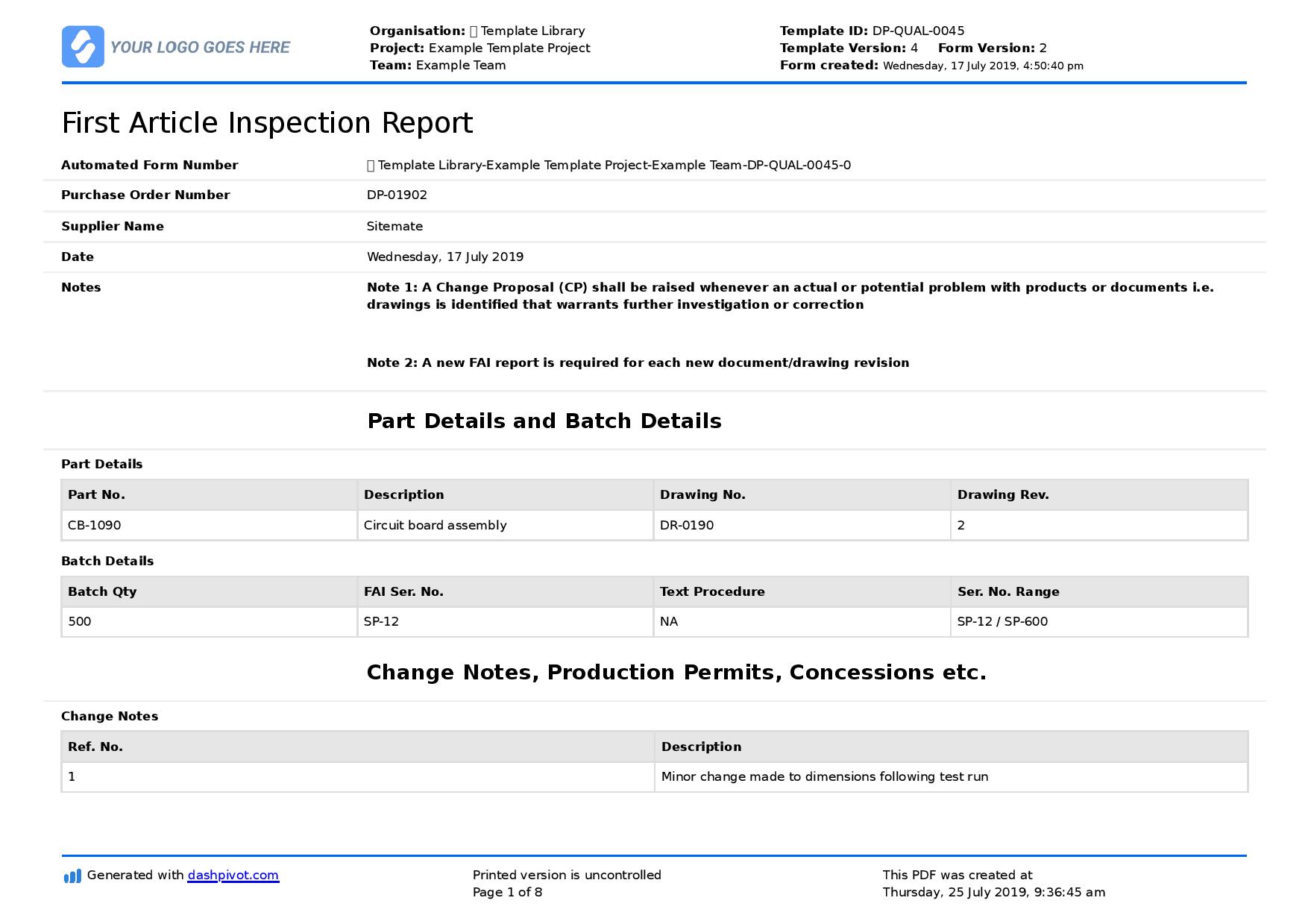
See (and use) this full first article inspection example here.
Improve how you manage first article inspections and other quality processes
As we have already discussed, one of the most important aspects of conducting and managing first article inspections is documenting and storing all of your inspection data properly.
One of the more recent developments in first article inspections, and quality management in general, has been the digitisation of capturing, organising and tracking all of this quality data.
Advancements in mobile and cloud-based technologies have enabled inspectors and other quality personnel to document first article inspections and other inspection procedures using phones, tablets and computers.
For first article inspections, this means that the buyer and purchaser can access and open a standardised form directly on the production floor, fill out the required details and then both sign it off digitally.
Rather than rely on paper, scanning, uploading and emailing back and forth, the companies can store all of their first article inspection records online where they are secure and searchable.
You can also take photos and document evidence of the first article inspection run inside of the app, and all of those records are attached to the report - rather than housing your photos in folders and trying to search for them when a questions or issue is raised.
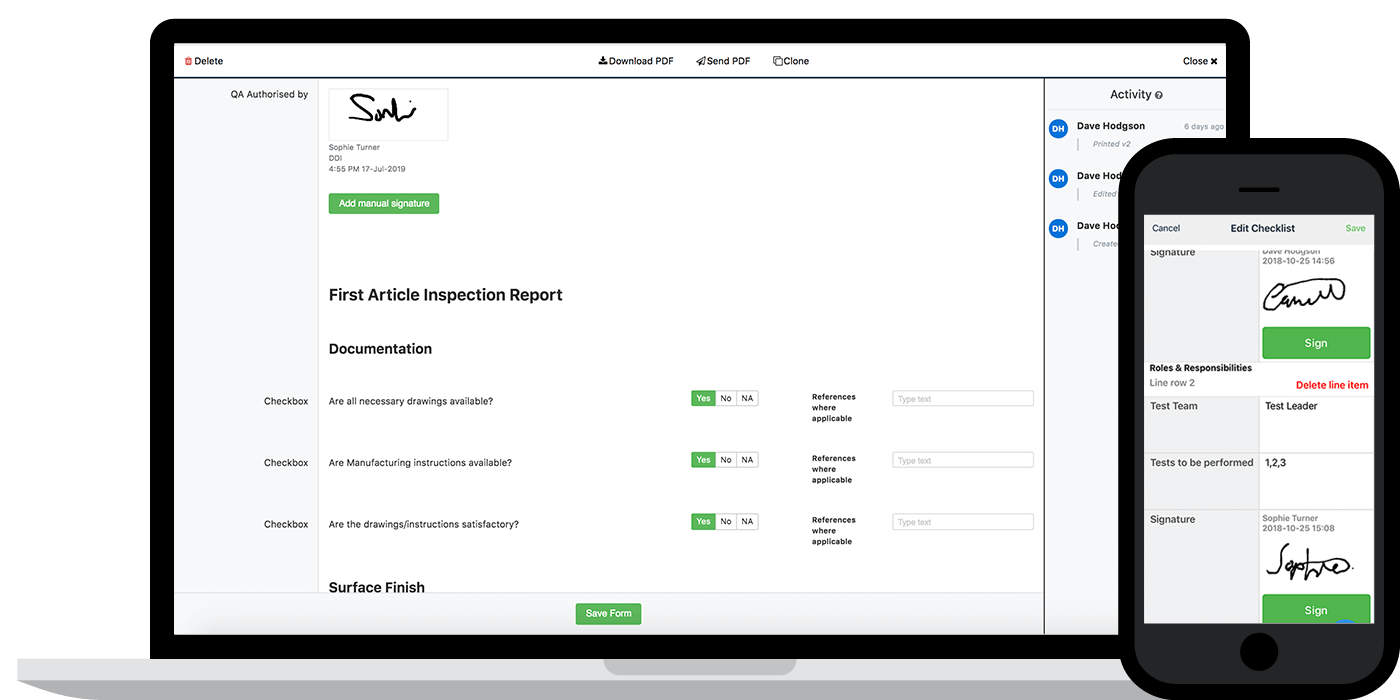
Using first article inspection software and many quality softwares in general also gives you the ability to streamline many aspects of the first article inspections.
For example, you can implement parts of your first article inspection process flow through automated workflows. These workflows enable you to create standard procedures for how first article inspections move through your organisation and through the approval process.
You may setup a process flow whereby each and every first article inspection form gets automatically sent to the quality manager or product manager for approval, who must sign it off before it heads to the supplier for sign off.
Softwares enable you to create tight controls and governance over what information is captured, how it is captured, and how it moves.
This type of strong governance and control is the type of process improvement which can have a dramatic impact on quality at your organisation.
Focusing on ways to improve and optimise your first article inspections is a great sign, because that means that you have a strong and reliable first article inspection approach and culture in place.
Quality is a constant battle and realm for continuous improvement, and first article inspections form an integral part of this fight - for both buyer and supplier.
People in 70+ countries use this quality management software to instantly improve their quality management.

